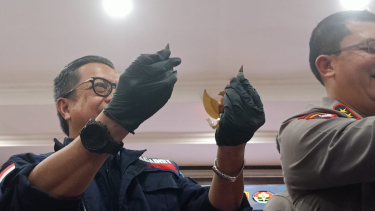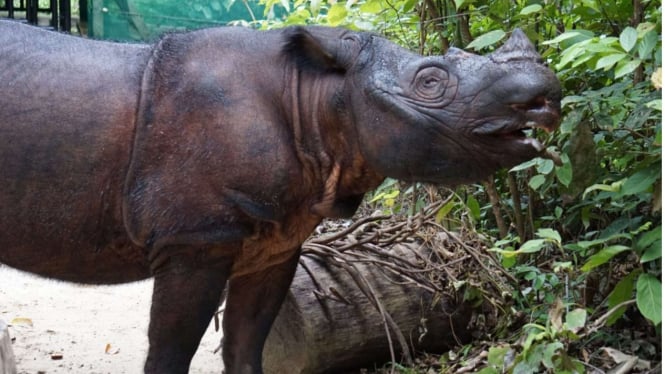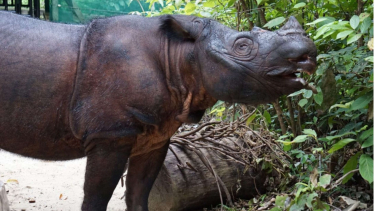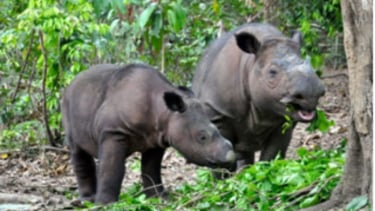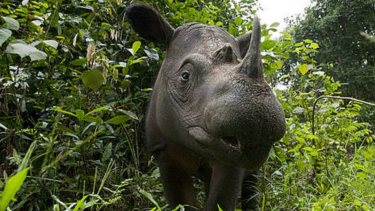World Rhino Day on September 22: Fun Facts about Rhino
- KEHATI
VIVA – World Rhino Day is celebrated on September 22 every year. World Rhino Day aims to provide knowledge and invite the public to take part in conservation actions for rhinos in the world because the Rhino is threatened with extinction.
The rhinoceros is a symbol of the pride of the Indonesian nation. There are five types of rhinos in the world, namely the African black and white rhino, the Indian rhino, the Sumatran rhino, and the Javan rhino.
Regarding their critically endangered conservation status based on the IUCN Red List, the Sumatran rhino and Javan rhinoceros continue to be the attention of the government and related parties in Indonesia to remain protected from the threat of extinction, one is through educational activities.
There are still many people who do not know the importance of conserving the biodiversity of Indonesia.
Facts about Sumatran Rhino and Javan Rhino
Badak Jawa
Here are fun facts about the Sumatran rhino (Dicerorhinus sumatrensis) and the Javan rhino (Rhinoceros sondaicus):
Physical characteristics
The Sumatran rhino is the smallest in the world and is the only rhino covered by hair. Previously, the Sumatran rhino had the nickname of a small two-horned rhino.
Other characteristics are large ears, grayish-brown or reddish-brown skin, and a horn length ranging from 25 to 80 cm.
The Javan rhinoceros is unique in that it has one horn and skin like a suit of armor. The more prominent upper lip is used to reach for food and put it in the mouth.
Habitat
Badak
- KEHATI
The Sumatran rhino can be found on the island of Sumatra both in the wild and in conservation areas such as Gunung Leuser National Park, Way Kambas National Park, and Bukit Barisan National Park.
The Sumatran rhino can also be found in Kutai, East Kalimantan. The Sumatran rhino previously occupied a fairly wide distribution area in lowland and medium-sized forests in Asia which included India, Bhutan, Bangladesh, Myanmar, Laos, Thailand, Malaysia (the Malay Peninsula and Sabah), Indonesia (Sumatra and Kalimantan), and the west. power of China, especially in Sichuan.
While the habitat of the Javan rhino is focused in the Ujung Kulon National Park. Previously, the Javan rhino was spread across the islands of Java and Sumatra. Southeast Asia to India and China.
Population and Preservation Status
Badak putih jantan terakhir.
- U-Report
The Sumatran rhino population is estimated to be less than 100 individuals in the wild based on the 2016 Population and Habitat Viability Analysis (PHVA) and only lives in Indonesia.
While the Javan rhinoceros’ number is about 75 individuals based on data from the Ministry of Environment and Forestry in 2021. The Sumatran rhino and the Javan rhino are both critically endangered according to the IUCN Red List.
The Role of Rhinos for Nature and Humans
Badak
- VIVA/Muhammad AR
Rhinos can maintain the balance of the natural ecosystem. Rhino dung and footing can be a place for live plant seeds.
Rhinos are bush and leaf-eating animals that stimulate the growth of new shoots, where new leaf shoots can absorb more carbon dioxide than old shoots.
In Indonesia, rhinos that live in Ujung Kulon National Park, Way Kambas National Park, Leuser National Park, and Bukit Barisan Selatan National Park are still not ready to be developed into ecotourism objects.
Threat
Badak.
- U-Report
One of the causes of the low population of Sumatran rhinos is the low reproductive capacity of individual rhinos in their habitat.
In addition, hunting and the availability of adequate habitat are likely to be a serious threat to the long-term sustainability of rhinos.
Although it is suspected that there is no hunting for the Javan rhinoceros, food availability is a threat in itself, where invasive plants are slowly driving away the native plants that feed the Javan rhinoceros in Ujung Kulon National Park.
Lecturer at the Faculty of Forestry, Bogor Agricultural University (IPB) Hariyanto revealed that the rare invasion (Arenga obtusifolia) is the main cause of the natural degradation of the Javan rhino habitat.
In the long term, without the control of this species, it can lead to a decline in the population of this animal and a decrease in biodiversity in Ujung Kulon National Park.
Preservation efforts
Badak Sumatera
- Dok. WWF
Through the Emergency Action Plan (RAD) to Save the Sumatran Rhinoceros Population, several strategies to restore the Sumatran rhino population were carried out by the government and several parties, such as carrying out intensive protection in the Leuser area, building a rhino breeding facility or sanctuary, and applying assisted reproductive technology for rhino breeding.
The KEHATI Foundation has been administering rhino conservation support through a program to transfer debt payments from the Government of Indonesia to the United States Government since 2017 in several pockets of the rhino population, such as in Gunung Leuser National Park, Bukit Barisan National Park, and Way Kambas National Park.
Regarding the conservation of the Javan rhinoceros, there are proposals for habitat expansion. In addition to avoiding the threat of the eruption of Mount Anak Krakatau and the brunt of the tsunami, the availability of food is expected to be a solution to the expansion of the Javan rhino's habitat.
